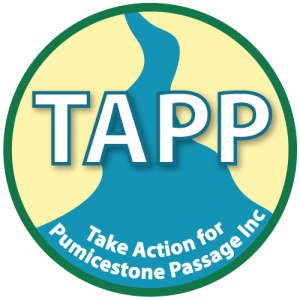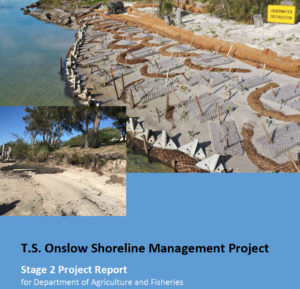Trichodesmium
Trichodesmium are Cyanobacteria, (Blue-green Algae) that appear naturally in
tropical and subtropical ocean waters and is commonly known as sea sawdust,
whale food and sea scum.
Trichodesmium is a member of the phytoplankton family’and plays an important
role in the aquatic food chain.
Normally Trichodesmium are barely visible to the naked eye, but in water that has
been calm for long periods it begins to float like sawdust. The Algal cells can join
up to each other to form strings and clumps. As the cells age, they become
positively buoyant and rise to the surface.
Trichodesmium blooms are most common between August and December. These
blooms can cause water to appear rust-coloured but traces of grey, green and
purple streaks can also be visible. ln stagnant conditions, Trichodesmium blooms
can release a clear toxin that changes the blooms’colour from rust brown to
green and also releases a pigment that colours the water pink.


The above photos show Trichodesmium clearly visible in Pumicestone Passage as
a green slick and also releasing pink colour to the water.
lf you come into contact with Trichodesmium, wash it off with running water and
there should be no after affects unless you have particularly sensitive skin.
Sometimes there are more serious outbreaks of Trichodesmium where it can look
like purple paint and emit an unpleasant “fishy” odour. ln October 2019, such an
event was recorded at Bribie lsland at Bellara. There was a substantial slick of oily
brown substance observed leaving a drain and entering Pumicestone Passage.
Efforts were made to stop it entering the Passage and Moreton Bay Regional
Council members identified the substance as a very dense form of
Trichodesmium. ln the same period of time, a similar event occurred at Golden
Beach.
The photos below show the Trichodesmium as it dried on the beach at Bellara and
also at Golden Beach. The contrast between these examples and that in the photos above of common outbreaks, indicate the high density of these particular blooms.


I wrote to a Marine Scientist at Bribie lsland, Dr- Ben Diggles for an explanation of
the unusual occurrence, explaining it was my understanding Trichodesmium only
came from the ocean, not from terrestrial environment. His simple explanation is
as follows:-
“lts very simple. Yes, the original inocula of Trichodesmium will have
originated from the ocean. No argument there. But the normal cell counts
for Trichodesmium are not so dense that they appear as a thick oily slick and
dry like purple paint. That is unusual,”
“What does stimulate cell division and blooms in Trichodesmium is access to
bioavailable phosphorous, iron and COz. Being a cyanobacterium,
Trichodesmium is not limited by Nitrogen as it can fix that from the air. lt is,
however, limited by available phosphorous and iron, and COZ. Stormwater will, of
course, be a logical source of all of these whenever it drains from urban areas
where houses and fertilized lawns are built on acid sulphate soils. So it makes
sense that the initial inoculum of low density Trichodesmium from offshore would
bloom to extremely high/obnoxious cell densities when it has access to usually
limiting nutrients in stormwater from modified urban areas.”
With all of Golden Beach and surrounding suburbs in an area of Acid Sulphate
Soils, (ASS), this is an important consideration for all residents living in the
immediate catchment of Pumicestone Passage. Don’t use excessive fertiliser on
lawns and gardens and don’t allow water from gardens to run into
stormwater drains. Trichodesmium is most likely to appear between August and
December and that is probably the same time as we are developing our
“springtime” garden. Don’t waste water by allowing it run into the drain.
For further information on Trichodesmium go to this Queensland Government
link:httpS: //www.qld.gov.au/envi ronment/coasts-waterways/mari neh
abitats/al gae-bloom s
lnformation supplied by Ken Mewburn from various references and Dr. Ben
Diggles.

